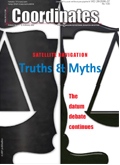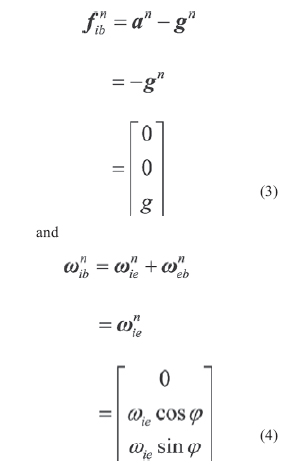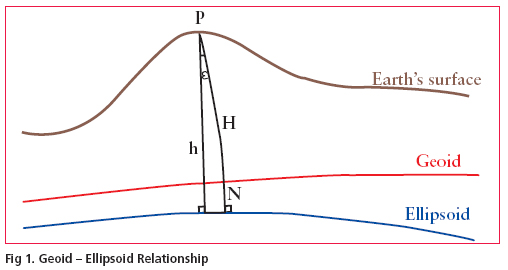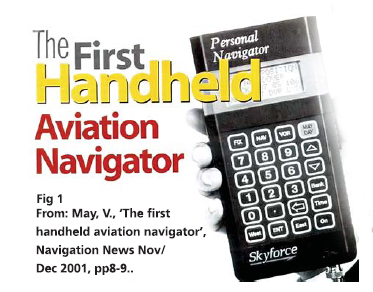
GloNav unveils industry’s lowest-power GPS RFIC
GloNav Inc. announced the volume production availability of its ultra low-power L1 GPS RFIC optimized for integration into cellular handsets, portable consumer electronic devices and battery operated GPS devices.
The GNR1040 is a highly integrated, low-power, single-conversion low- IF GPS RFIC for the 1.575GHz – L1 signal that includes built-in flexibility and programmability to support multiple GPS baseband processors. www.glonavgps.com

Leica FCMS Flight & Sensor Control Management System
Sweden-based Leica Geosystems’ Flight & Sensor Control Management System (FCMS), assists pilots and sensor operators to effi ciently control GPS-based survey fl ights. It performs all tasks, such as fl ight guidance, sensor recording and sensor monitoring, on a single man-machine interface, providing automated operation and minimized user interaction.Leica Geosystems also introduces the Rugby 50 and Rugby 55. With the Leica Rugby 50 and 55 are two new lasers that are designed for different applications: The Rugby 50 is dedicated to general construction contractors, being a tough, affordable laser with a single button. Whereas the Leica Rugby 55 is designed for the interior contractor – a versatile laser, perfect for almost any leveling and alignment job. In addition, Leica Geosystems has also announced a new enterprise software licensing program called Leica EnterpriseElite. Qualifi- ed companies benefi t from simplified software license management tools, fl exibility to immediately react to changing project demands, signifi cant software cost savings, and the ability to effi ciently standardize an entire global organization. www.leica-geosystems.com
February 2007
Integrated Water Resource Management- (IWRM-2007)
5-7 February, Banglore, India
www.angelfire.com/planet/kerf/
Geomatica 2007: Geomatics …

As part of the 17th United Nations Regional Cartographic Conference for Asia and the Pacific (UNRCC-AP) held in Thailand in September 2006, Working Group 3 of the Permanent Committee for GIS Infrastructure for Asia and the Pacifi c (PCGIAP) organised a one-day international workshop (21st September 2006) on the‘Integration of Built and Natural Environmental Datasets within National SDI Initiatives’. The workshop was conducted with the support of the Centre for Spatial Data Infrastructures and Land Administration, the University of Melbourne.

Satellite Navigation – Truths & Myths
PROFESSOR DAVID LAST
Determination of local gravimetric
geoid S K SINGH, BRIG (DR) B NAGARAJAN, PK GARG
A new approach for SINS stationary selfalignment JIANGBIN ZHOU, JIANPING YUAN, XIAOKUI YUE, JIANJUN LUO
The datum debate LT GEN SURINDAR, P MEHTA (RETIRED) , Prof M N Kulkarni and N K Agrawal
Online: GPS-GAP DR ALFRED LEICK
PCGIAP workshop

GPS has demonstrated a stellar performance ever since its inception. In fact the satellites typically operate beyond their expected lifetime which potentially creates obstacles to the timely modernization of the system. GPSGAP (GPS, Geodesy and Application Program) is an online educational initiative by the University of Maine that offers in-depth knowledge about this fantastic system and its uses.
My enthusiasm for GPS began when testing the experimental Macrometer receiver during the summer of 1982 at M.I.T. over a 30 km baseline from Woburn, MA, to Mount Watchusett. The satellite visibility ranged from about 6 p.m. to midnight in New England. Many of the sunset watchers at the summit were puzzled by my activities and impressed by the huge piece of equipment in the back of my station wagon, the abundance of cables, and the strange looking antenna (so they thought). Their puzzlement about what I was up to was refl ected in some of their comments, such as“Is this thing taking off?”, or “Are you on our side?” Of course, there was plenty of time until midnight to be entertained by Fourier transforms and such on the computer screen, and to ponder the unlimited potential of GPS. Whatever has evolved since those days in terms of civil uses of GPS needs no further explanation.

In India, for topographical mapping, we are using an old Geodetic Datum (reference ellipsoid on which the coordinates: Latitude and Longitude are projected, and mapping is carried out), called Everest 1880, defined by the work of Col. George Everest (one of the greatest Geodesists, for whom the highest peak in the world is named). It is a local datum, best-fi tting for India (as in 1880), but not fi tting the Earth as a whole in the best possible manner.

The object of the SINS selfalignment is to determine the direction cosine of the transformation from the body frame to the navigation frame, namely, the elements of initial attitude matrix, using the accelerometer and gyro outputs. As the alignment accuracy affects the accuracy of the navigation system directly, one of the most important requirements of SINS alignment is high alignment accuracy. In many practical applications, SINS alignment also requires high alignment speed and the capability of self-determination, especially for military applications.

The demand for a high resolution geoid model has grown substantially during the last few decades especially after inception of Global Positioning System (GPS). Many countries across the world have already developed their own geoidal model which serve as the means of deriving orthometric heights from GPS observations. The impact of GPS on surveying application is undeniable. More so, this revolution has not been confi ned to the surveying community, but has extended into mapping, navigation and Geographic information system (GIS) areas. During the last few years, we have been witnessing the wide spread adoption of GPS with an equivalently
vibrant range of accuracy requirement. Many of these applications require accurate vertical positions.
The task of transforming the ellipsoidal height obtained from GPS technique to the orthometric height has prompted geodesists around the world to determine the high precision geoid undulations, for their region of interest. In India the present day nation wide geoid was computed a long time back and based on astro geodetic observations with respect to Everest spheroid. It has various limitations and does not have any signifi cance as far as GPS solutions for orthometric height is concerned.

Today’s professional navigators may well be the last. As recently as a generation ago, navigation was almost solely the specialised art of a small number of highly-skilled people. They wore uniforms with emblems on their shoulders. They had years of training.They used complex, expensive, equipment. They bestrode the bridges of ships and the fl ight decks of the large commercial aircraft and took star shots.









 (5.00 out of 5)
(5.00 out of 5)